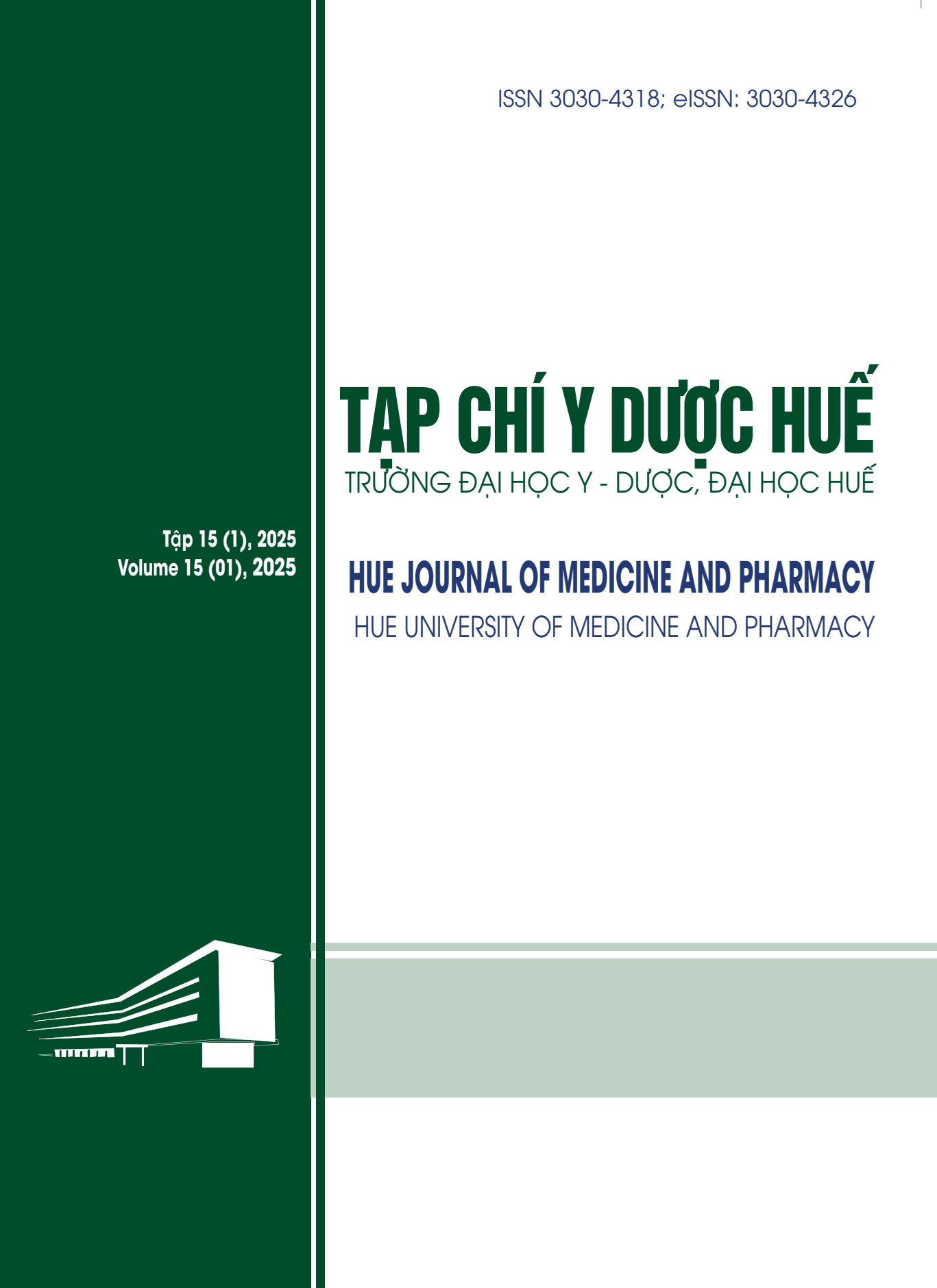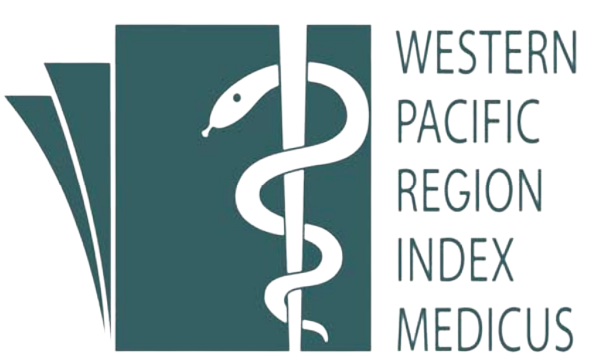Abstract
Background: Leiomyomas are a group of benign smooth muscle tumors commonly present in women of reproductive age. The quantity, dimensions, and positioning of the tumor are critical considerations in determining the appropriate surgical approach. In recent years, laparoscopic myomectomy has become a common procedure, offering numerous benefits. Consequently, we conduct the study which aims to demonstrate the clinical and paraclinical characteristics as well as the outcomes of laparoscopic myomectomy.
Materials and methods: A cross-sectional follow-up descriptive study involving 130 patients with uterine fibroids who underwent laparoscopic myomectomy at Hue Central Hospital from April 2022 to April 2024.
Results: The predominant clinical manifestations observed were an increase in tumor size and abnormal uterine bleeding. A majority of the cases involved 1 to 2 fibroids (96.9%), primarily located in the intramural (43.1%) and subserosal (40.8%) regions. The average duration of the surgical procedure was 149.1 ± 36.8 minutes, accompanied by an average blood loss of 148.3 ± 74.9 ml. Patients had a mean postoperative hospital stay of 4.8 ± 1.6 days. All individuals expressed satisfaction with this surgical approach. Factors such as the number of tumors, their size, and location influenced both the duration of the surgery and the amount of blood loss.
Conclusions: Laparoscopic myomectomy is a safe and effective minimally invasive procedure when it is appropriately indicated and conducted by skilled surgeons.
| Published | 2025-04-24 | |
| Fulltext |
|
|
| Language |
|
|
| Issue | Vol. 15 No. 1 (2025) | |
| Section | Original Articles | |
| DOI | 10.34071/jmp.2025.1.20 | |
| Keywords | u xơ cơ tử cung, phẫu thuật nội soi bóc u xơ cơ tử cung Leiomyomas, laparoscopic myomectomy |

This work is licensed under a Creative Commons Attribution-NonCommercial-NoDerivatives 4.0 International License.
Copyright (c) 2025 Hue Journal of Medicine and Pharmacy
Hale Goksever Celik, Ercan Bastu. Are there any limits for laparoscopic myomectomy?—tips & tricks. Gynecology and Pelvic Medicine. 2024:7-25.
Emma Giuliani, Sawsan As-Sanie, Erica E. Marsh. Epidemiology and management of uterine fibroids. International Journal of Gynecology & Obstetrics. 2020.
Mathew R.P., Francis S., Jayaram V, et al. Uterine leiomyomas revisited with review of literature. Abdom Radiol 46. 2021:4908–26.
Lê Minh Tâm, Võ Văn Khoa, Phan Thị Minh Thư. Cập nhập xử trí u xơ cơ tử cung dựa trên bằng chứng. Tạp Chí Phụ sản. 2019;17(1):6-12.
Movilla P., Orlando M., Wang J., et al. Predictors of Prolonged Operative Time for Robotic-Assisted Laparoscopic Myomectomy: Development of a Preoperative Calculator for Total Operative Time. J Minim Invasive Gynecol. 2020;27(3):646-54.
Dương Đức Thắng, Nguyễn Tuấn Minh, Đặng Thị Minh Nguyệt. Phẫu thuật bóc u xơ cơ tử cung tại Bệnh viện Phụ Sản Trung Ương. Tạp chí Y học Việt Nam. 2023;522(1):18-22.
Nicolaus K, Bräuer D, Sczesny R, et al. Unexpected coexistent endome- triosis in women with symptomatic uterine leiomyomas is independently associated with infertility, nulliparity and minor myoma size. Archives of Gynecology and Ob- stetrics. 2019;300(1):103-8.
Claire Bonneau, Isabelle Thomassin-naggara, Sophie Dechoux, et al. Value of ultrasonography and magnetic resonance im- aging for the characterization of uterine mesenchymal tumors. Acta Obstetricia et Gynecologica Scandinavica. 2014:261–8.
Mai TTP. Tình hình bóc u xơ tử cung qua nội soi tại bệnh viện Phụ sản Trung ương từ tháng 1 năm 2005 đến tháng 6 năm 2009. Bộ môn Phụ Sản, Đại học Y Dược Hà Nội Luận văn tốt nghiệp Bác sĩ Nội trú. 2009.
Cao M., Qian L., Zhang X., et al. Monitoring Leiomyoma Response to Uterine Ar- tery Embolization Using Diffusion and Perfusion Indices from Diffusion- Weighted Imaging. BioMed Research In- ternational. 2017.
Katherine E. Hartmann, Digna R. Velez Edwards, David A. Savitz, et al. Prospective Cohort Study of Uterine Fibroids and Mis- carriage Risk. American Journal of Epidemiology. 2017;186(10):1140-8.
Dubuisson J. B., Fauconnier A., Fourchotte V., et al. Laparoscopic myomectomy: Predicting the risk of conversion to an open procedure. Hum Reprod. 2001;16(8):1726-31.
Watrowski R., Jäger C., Forster J. Predictors of postoperative hemoglobin drop after laparoscopic myomectomy. Wideochir Inne Tech Maloinwazyjne. 2017;12(1):81-7.
Shin DG, Yoo HJ, Lee YA, Kwon IS, Lee KH. Recurrence factors and reproductive outcomes of laparoscopic myomectomy and minilaparotomic myomectomy for uterine leiomyomas. Obstet Gynecol Sci. 2017;60(2):193-9.
D’Silva EC, Muda AM, Safiee AI, Ghazali W. Five- Year Lapsed: Review of Laparoscopic Myomectomy versus Open Myomectomy in Putrajaya Hospital. Gynecol Minim Invasive Ther. 2018;7(4):161-6.
An LSP. Đánh giá kết quả phẫu thuật nội soi bóc u xơ tử cung. Trường Đại học Y - Dược Huế. 2021.
Mallick R, Odejinmi F. Pushing the boundaries of laparoscopic myomectomy: a comparative analysis of peri-operative outcomes in 323 women undergoing laparoscopic myomectomy in a tertiary referral centre. Gynecol Surg. 2017;14(1):22.
Sizzi O, Rossetti A, Malzoni M, et al. Italian multicenter study on complications of laparoscopic myomectomy. J Minim Invasive Gynecol. 2007;14(4):453- 62.
Leng J, Lang J, Liu Z, Huang R. Laparoscopic myomectomy. Chin Med Sci J. 2001;16(2):111-4.
Ye M, Zhou J, Chen J, Yan L, Zhu X. Analysis of hidden blood loss and its influential factors in myomectomy. J Int Med Res. 2020;48(5):300060520920417.
Roh CK, Kwon HJ, Jung MJ. Parasitic leiomyoma in the trocar site after laparoscopic myomectomy: A case report35434089. World J Clin Cases. 2022;10(9):2895-900.
Bean EM, Cutner A, Holland T, Vashisht A, Jurkovic D, Saridogan E. Laparoscopic Myomectomy: A Single-center Retrospective Review of 514 Patients. J Minim Invasive Gynecol. 2017;24(3):485-93.
Ciavattini A, Clemente N, Delli Carpini G, et al. Laparoscopic uterine artery bipolar coagulation plus myomectomy vs traditional laparoscopic myomectomy for “large” uterine fibroids: comparison of clinical efficacy. Arch Gynecol Obstet. 2017;296(6):1167-73.
Mais V, Ajossa S, Guerriero S, Mascia M, Solla E, Melis GB. Laparoscopic versus abdominal myomectomy: a prospective, randomized trial to evaluate benefits in early outcome. American journal of obstetrics and gynecology. 1996;174(2):654-8.
Song T, Kim T-J, Lee S-H, Kim T-H, Kim W-Y. Laparoendoscopic single-site myomectomy compared with conventional laparoscopic myomectomy: a multicenter, randomized, controlled trial. Fertility and Sterility. 2015;104(5):1325-31.
Han H, Han W, Su T, Shang C, Shi J. Analysis of risk factors for postoperative bleeding and recurrence after laparoscopic myomectomy in patients with uterine fibroids: a retrospective cohort study. Gland Surg. 2023;12(4):474-86.
Rossetti A, Sizzi O, Soranna L, Cucinelli F, Mancuso S, Lanzone A. Long-term results of laparoscopic myomectomy: recurrence rate in comparison with abdominal myomectomy. Hum Reprod. 2001;16(4):770-4.
Sanada S, Ushijima K, Yanai H, et al. A critical review of “uterine leiomyoma” with subsequent recurrence or metastasis: A multicenter study of 62 cases J Obstet Gynaecol Res. 2022;48(12):3242-51.
Balulescu L, Brasoveanu S, Pirtea M, et al. The Impact of Laparoscopic Myomectomy on Pregnancy Outcomes: A Systematic Review. J Pers Med. 2024;14(4).
Fagherazzi S, Borgato S, Bertin M, Vitagliano A, Tommasi L, Conte L. Pregnancy outcome after laparoscopic myomectomy. Clin Exp Obstet Gynecol. 2014;41(4):375-9.
Lu B, Wang Q, Yan L, Yu K, Cai Y. Analysis of Pregnancy Outcomes after Laparoscopic Myomectomy: A Retrospective Cohort Study. Comput Math Methods Med. 2022:2022:9685585.






